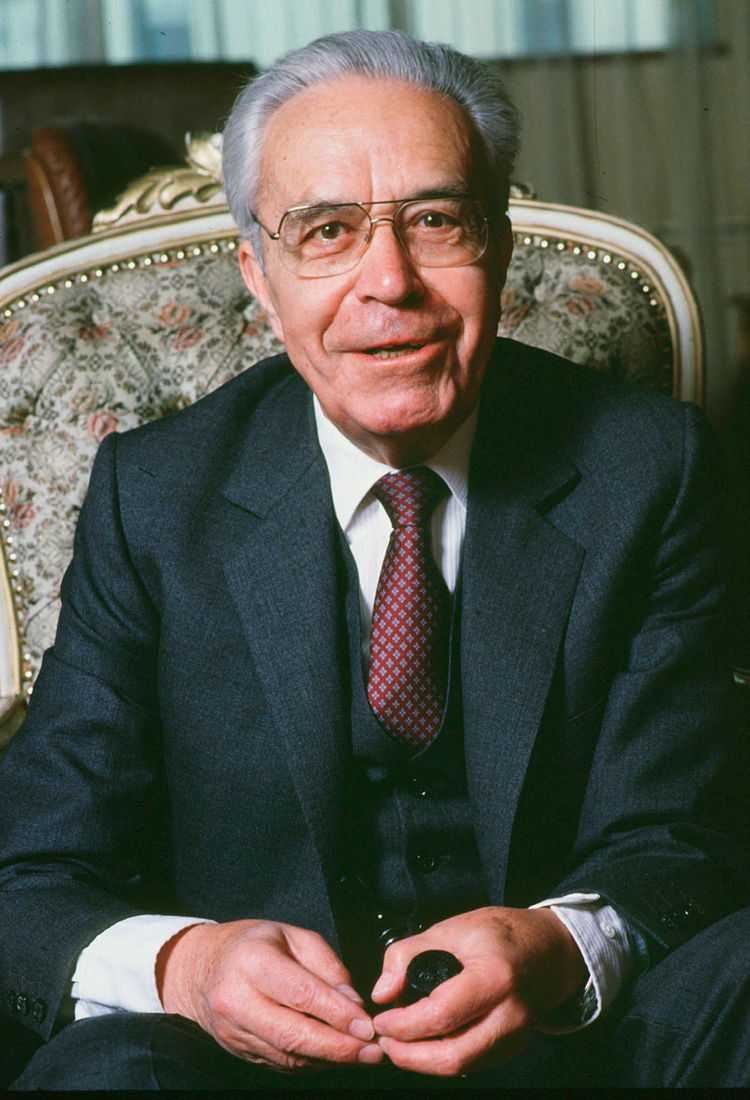 |
| Victor Paz Estenssoro |
Leader of Bolivia’s Revolutionary Nationalist Movement (Movimiento Nacionalista Revolucionaria, or MNR) and a leading figure in the Bolivian revolution, Victor Paz Estenssoro was elected to the presidency four times and played a major role in Bolivia’s 20th century history.
His overall political trajectory over four decades can be described as a gradual shift from the militant left to the neoliberal right, though whether that transformation entailed an abandonment of principles or growing pragmatism remains a matter of debate.
Born in Tarija, Bolivia, on October 2, 1907, to a prominent family, he received his law degree from San Andrés University in La Paz in 1927. Thereafter he occupied a variety of administrative posts before serving as deputy in the National Congress, where he emerged as a leading figure in the opposition movement.
In 1941 he cofounded the MNR, a leftist political party advocating far-reaching social and economic reforms. From 1943 to 1946, he served in the cabinet of Colonel Gualberto Villarroel but was forced out by domestic and U.S. opposition.
Finishing third in the 1947 presidential elections, he triumphed in 1951, results nullified by the oligarchic regime of Mamerto Urriolagoitia. There followed a period of widespread social unrest, spearheaded by labor unions and peasant leagues, culminating in April 1952 in the overthrow of the government and the MNR’s assumption of power.
In his first administration, Paz Estenssoro launched an ambitious kegiatan of social and economic reform-slashing the size of the military, extending the franchise, nationalizing the tin mines, breaking up large estates, and instituting universal public education—that met many of the demands of his constituency but galvanized right-wing opposition to MNR rule.
That opposition mounted during the administration of his successor and MNR cofounder Hernán Siles Zuazo, as did the political polarization of the country. During Siles Zuazo’s presidency, Paz Estenssoro served as ambassador to Great Britain before returning to Bolivia to seek another term as president.
He won handily, and in his second term struggled to keep the fragmenting MNR together and consolidate the gains of the revolution, while fending off a resurgent oligarchy and military and growing challenge from an increasingly militant left, led by his vice president, the labor leader and populist Juan Lechín. Expelling Lechín from the MNR and amending the constitution to permit his reelection, he won a third term in 1964 but was promptly ousted in the military coup of November 3, 1964, which ended the Bolivian revolution.
Going into exile in Lima, Peru, he returned to Bolivia to lend his support to the left-leaning military regime of Hugo Banzer Suárez, an action that led to a break with Siles Zuazo and undermined his populist credentials.
Soon repudiating the Banzer regime, in 1974 he was expelled from the country and went into exile in the United States. He returned in 1978 to run again for president, came in third, and after the results were nullified by the military, ran again in 1979, coming in second. The military again intervened, and in 1980 Paz Estenssoro again went into exile.
In 1985 he was elected as president for the fourth and last time, during which he followed a neoliberal model, slashing state expenditures and reining in hyperinflation. He retired from politics in 1989 and died on June 7, 2001, leaving a complex political legacy.